Place Forum 4: Preventative design

By embracing preventative design principles, we can create strong communities, improve public services and help tackle inequalities.
Our recent Architecture and Design Scotland Place Forum on Preventative Design offered a clear vision: a future where design proactively shapes communities, anticipating and addressing challenges before they arise. This is particularly timely for Scotland, which faces complex issues like child poverty and climate change. Reactive solutions often come at a steep cost. Preventative design, however, empowers us to invest in upstream solutions, fostering resilience and well-being.
Creative, care and community wellbeing
The forum showcased inspiring projects, layered with creative, care and community wellbeing. Ewan Anderson's presentation on Fraser Avenue housing showed us a vision of a neighbourhood that adapt to residents' evolving needs, fostering a sense of belonging and security throughout life stages. This extends beyond physical accessibility to creating spaces that nurture social connections, vital for individual and community well-being. Rekha Barry-Houston's exploration of Creveul Court delved into dementia-friendly design. Homes that prioritise safety and offer familiarity and intuitive navigation can significantly enhance the lives of those with dementia and their caregivers.
Sustainability
Sustainability emerged as another key theme. Kevin McGeough's discussion on Ebbsfleet Garden City described a vision of communities designed with health, environmental and social responsibility at their core. Walkable spaces, green infrastructure, and a focus on social cohesion create a future where sustainability and wellbeing are inextricably linked.
The human touch and collaboration
The human touch was also emphasised. Rodney Mountain's perspective highlighted the invaluable contribution of project artists in shaping spaces that resonate with people, fostering a sense of connection and identity to patients, families and staff.
Christine Owen's closing remarks underscored the importance of collaboration, echoing the Christie Commission Report's emphasis on citizen engagement. Preventative design thrives on a collaborative approach, ensuring solutions effectively address the specific needs and aspirations of local communities.
Key takeaways:
- Holistic approach: Preventative design integrates care, creativity, collaboration, and opportunity creation.
- Expanded benefits: It improves not just user experience, but also staff well-being, productivity, health outcomes, and quality of life within the community.
- Learning by doing: Effective preventative design requires hands-on experience and continuous reflection.
- Small changes, big impact: Even seemingly minor adjustments, like bus timetable modifications, can have a transformative effect.
- Collaboration is key: Preventative design thrives on good partnerships with clients, communities, and other stakeholders.
- Leadership matters: Leaders who champion preventative design and advocate for system evolution are essential.
- Hardware, software and heartware: Physical elements, supporting systems and community empowerment are needed for success.
- Empowerment first: Preventative design should prioritise the needs and well-being of those it serves.
- Design for safety: Safety considerations should be integrated from the initial design phase.
- Positive user experience: Lighting, wayfinding, and personalisation all contribute to fostering positive interactions within a space.
- Fresh perspectives: Collaboration with artists and individuals outside the design field can spark innovation, transform projects and leave lasting changes.
Overall, the Place Forum on Preventative Design highlighted the importance of this approach as a collaborative and iterative process that prioritises people’s needs and wellbeing. By embracing preventative design principles, we can create strong communities, improve public services and help tackle inequalities.
Learning about preventative design
Presenters
- Rodney Mountain, Dundee Medical Health Care Improvement Team
- Rekha Barry-Houston, Senior Architect, Anderson Bell Christie
- Kevin McGeough, Director of Ebbsfleet Garden City Healthy New Town Programme at Ebbsfleet Development Corporation
- Christine Owen, Associate Director, Innovation Unit
- Ewan Anderson, Director, 7N Architects
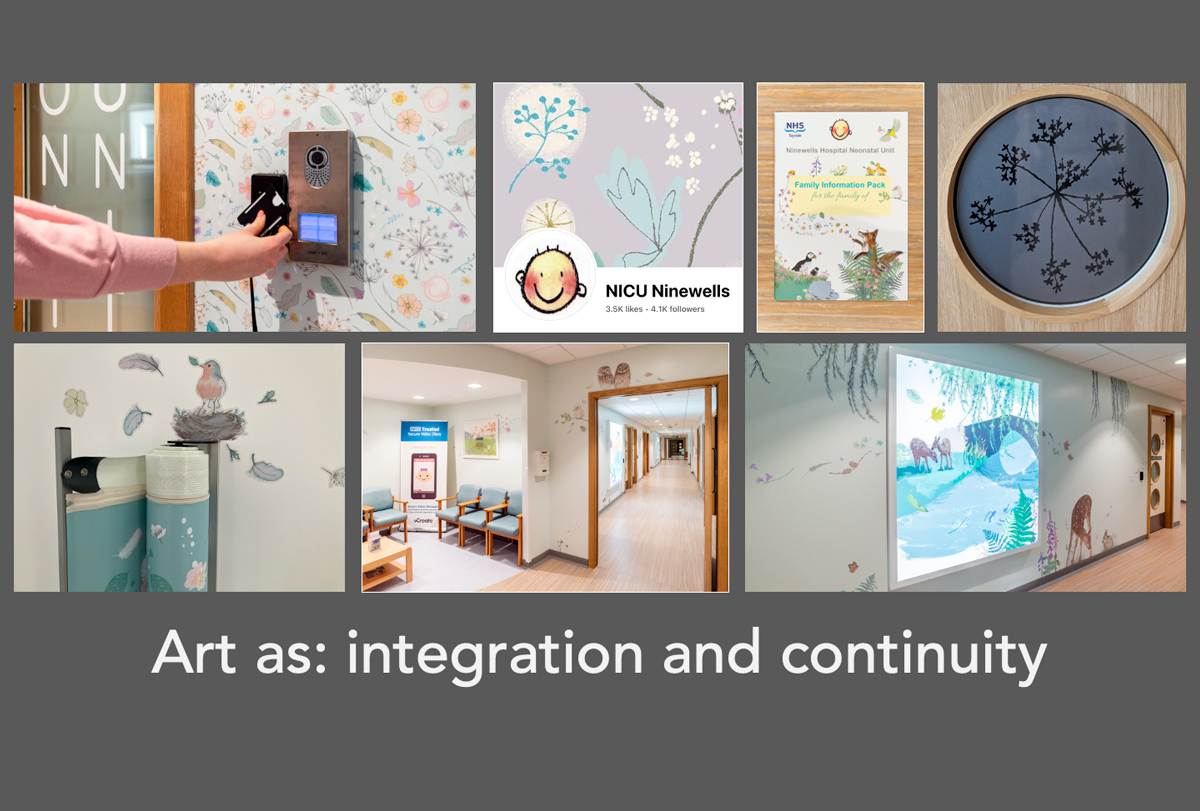
Rodney Mountain, Dundee Medical Health Care Improvement Team
Art and observation from the start
Rod shared insights learned primarily from his healthcare background and experience working in Tayside Healthcare Design.
Triangulation and integration: optimised as a preventative strategy
Healthcare environments and spaces are naturally designed with patients as the primary focus, but also considering the professionals who work there. Traditionally, it has been a very linear approach – doctor, patient, doctor, nurse, doctor, allied health professional.
Unless spaces are observed, key people might be missed. We need to triangulate information and think about who the missing people are in the triangle of care we are designing for. Families and carers are just as integral to any healthcare journey and need to be included in any design phase.
A fantastic concept called Family Integrated Care (FiCare) is now used throughout all neonatal units in Scotland and beyond, and it's being brought into other elements of healthcare.
Artist from the start: visual journeys
An important concept is having an artist as an equal member of the design team right from the start of the project phases. They bring an outside perspective, fresh and unbiased, with new approaches and ideas for the environment. They can integrate and have conversations with a wide range of people in the design process – staff, families, architects, and design teams.
Art is seen throughout the journey of any patient, carer, or worker in the environment, from the entry door to social media sites and all forms of communication. In the unit, there's a brand, and it's integrated into everything.
And what this brings is wonderful for team working and resilience. Bringing children, families and staff that work in the units through a lovely visual journey from the reception, down the corridors to the operating theatre and back to the recovery area.
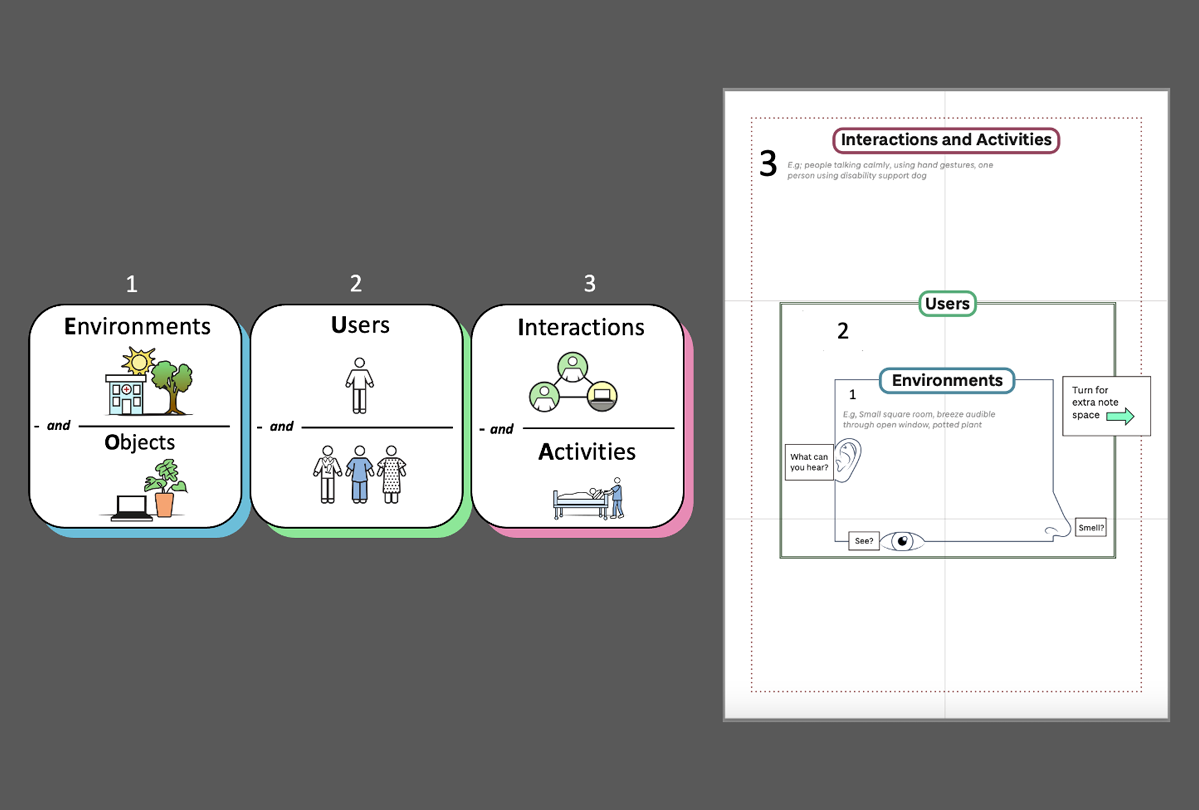
AEIOU – observing what people do
AEIOU is an observational tool learned from working with anthropologists and ethnographers. It's a way to get a better understanding of what people actually do in environments within the real world, not what we think they do.
There's a real danger of sitting at a desk and trying to work out an environment – who the people are, what the objects are, and what happens. It's much better to come into that world, observe it, record it, and gather information by seeing what people actually do in the environment.
A desk is a dangerous place from which the world view the world.
Jean Le Carré
Central to this is the environment, getting that sensory understanding of the space, what you're seeing, hearing, smelling, then the users and then finally the interactions and the activities. Those human activities, interactions and behaviours gathered and analyzed are the really rich elements of information to a design process.

Creveul Court, Alexandria Rekha Barry-Houston, Senior Architect, Anderson Bell Christie
Creveul Court: a pioneering dementia-friendly design project
Situated in Alexandria, West Dunbartonshire, Creveul Court is a pioneering project for the local authority. Anderson Bell Christie (ABC) were appointed as the design team at the feasibility stage and saw the project through to completion. The team was tasked with incorporating dementia-friendly principles, which they embraced as an exciting and rewarding challenge.
ABC's commitment to inclusive communities
As a practice, ABC is deeply committed to creating "lifetime neighbourhoods" - applying principles of accessibility and inclusion across all their projects.
Alexandria’s context
Alexandria, located south of Balloch, is a post-industrial village facing challenges of an aging population and the lingering effects of post-war development and decline. Unlike neighbouring tourist towns, Alexandria lacks the same economic advantages.
The project site has significant historical interest – it was previously home to a bank in the 1900s and boasted excellent connections to the town centre, with a cherished fountain nearby and links to the river. Alexandria has an engaged community with a collective interest in improving their town.
Addressing safety and rejuvenating the area
One key goal was to address the area's high crime rate. The design team worked closely with the local "designing-out-crime" officer to implement preventative measures that would promote independence and safety for older residents.
The site strategy aimed to re-establish the connection to the river and the smaller fountain, creating a gateway to the main street and defining clear routes through the site. Plans included a communal south-facing garden and the integration of an existing sheltered bungalow development.
Controlling movement across the site was essential, and the design team collaborated with the crime prevention officer to ensure the layout and design would deter criminal activity.
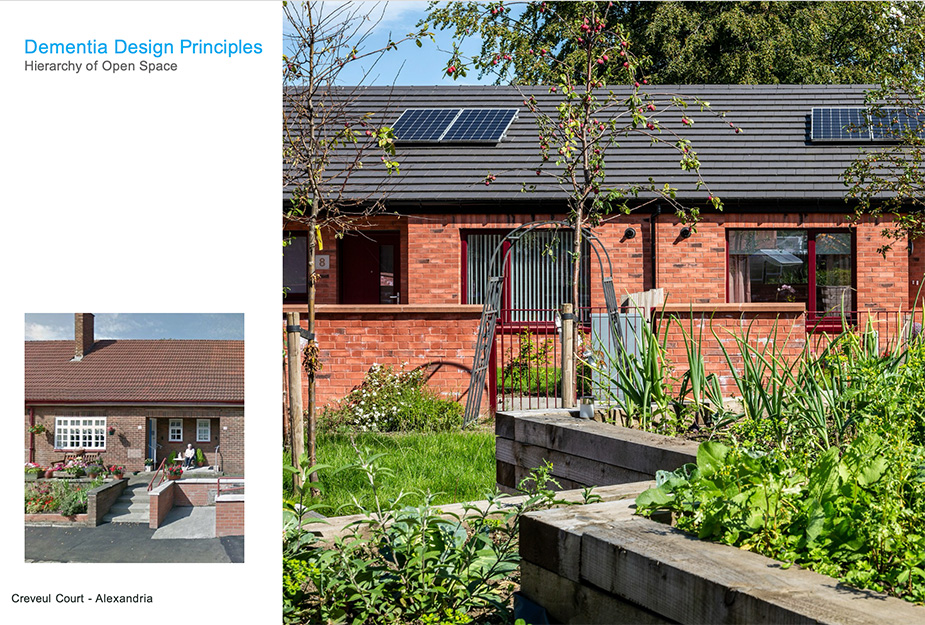
Dementia-friendly design in action
Dementia-friendly principles were woven throughout the outdoor and indoor spaces. This included providing different levels of social engagement, with setback terraces for observation and private outdoor spaces for residents. Sightlines, lighting, colour contrast, and wayfinding were all carefully considered to empower residents and reduce confusion.
The project also included a tenement-style building that re-established a presence on the street, while sheltering the communal spaces behind with bungalows and accessible units.
Pushing boundaries and achieving success
While dementia-friendly design guidance is not mandatory, the design team, contractor, and client were committed to pushing the boundaries and achieving the project's full potential. Accessibility features, such as lifts, futureproofed wet rooms and kitchens, and visual cues, were integral to the design.
This pioneering project has become an exemplar case study for the local authority and has won an innovation award. ABC is now applying the lessons learned from Creveul Court to another dementia-friendly project for the same client.
Click here to learn more about Anderson Bell Christie
Image credit: Anderson Bell Christie

Kevin McGeough, Director of Ebbsfleet Garden City Healthy New Town Programme at Ebbsfleet Development Corporation
Delivering a healthy garden city for the 21st century
Ebbsfleet Garden City, rising on a former chalk quarry east of London, is the first new town in Britain in 50 years and the first garden city in a century. It prioritizes resident health, sustainability, and a vibrant community.
Built on a brownfield site of old chalk quarries east of London, Ebbsfleet is the first Garden City in 100 years and the first New Town in 50 years.
At the core, the aim of the leaders is to bring together the following strands to create a healthy and sustainable community:
- The Hardware (design)
- The Software (model of living)
- The Heart ware (empowering residents)
The vision
Championed by the government and Ebbsfleet Development Corporation, Ebbsfleet aspires to breathe new life into the traditional garden city concept. It promises modern living with high-quality design, abundant green space, strong connections, and a focus on resident health and well-being.
Diverse communities are emerging almost organically, brimming with energy and ideas, and breathing life into the modern garden city. Local residents are also empowered, through the Ebbsfleet Garden City Trust, to protect and steer the long-term future of the area..
Ebbsfleet draws inspiration from successful historical projects like New Lanark, Edinburgh New Town, and Bradford’s Saltaire. These places all shared the belief that improved living conditions would lead to increased productivity, and their success is evident in their UNESCO World Heritage Site status.
Healthy new towns programme
Designated in 2016, The Healthy New Towns programme worked with 10 sites across England to explore how the development of new places could create healthier and connected communities with integrated and high-quality services. Ebbsfleet’s priorities include:
- reducing childhood and young adult obesity
- improving healthy eating adults
- improving access to green space and water for everyone
- reducing health inequalities across and between neighbourhoods
- delivering new and refreshed health services which put local people in control of managing their health
- delivering new homes that allow residents to live independently
- delivering an accessible and inclusive blue and green infrastructure that promotes healthy lifestyles
- promoting and sustaining a vibrant civic life which fosters community activity and cohesion
- new model of care. Wellbeing Hub near the train station
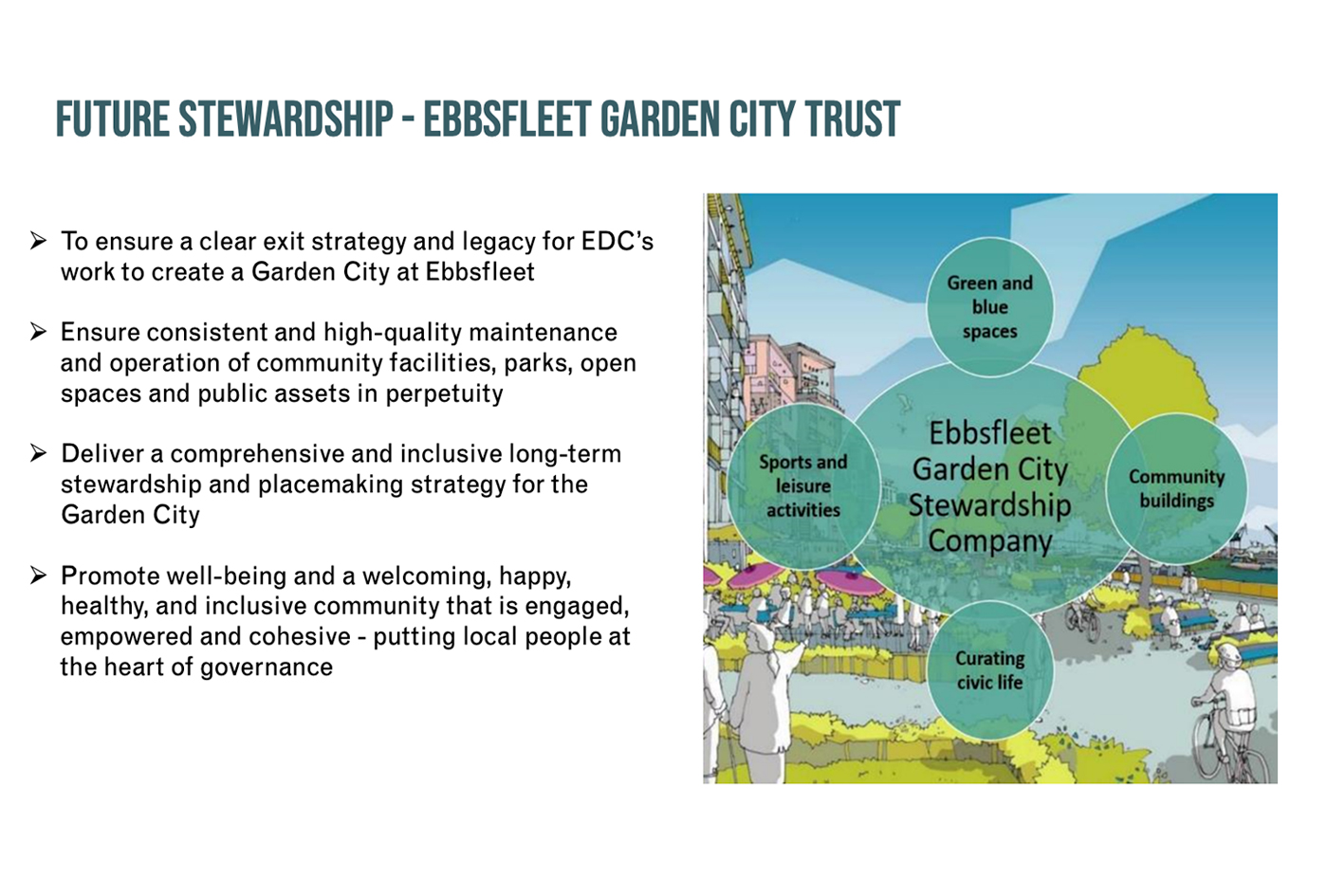
Environment & sustainability
The vision for Ebbsfleet is to deliver a sustainable development that is fit for the future, where everyone can make sustainable choices and live healthy lives.
Over 40% of the Ebbsfleet development area will be dedicated to green and blue space, offering residents and visitors space to enjoy nature and all it has to offer.
While innovation and high-quality design are at the heart of the growing community, so is biodiversity and sustainability, ensuring residents, visitors and the Corporation balance development ambitions with commitment to protect and conserve the future of Ebbsfleet for generations to come.
Cultural development
Ebbsfleet Development Corporation aim to promote, encourage, fund, and grow cultural and creative opportunities in the local area. By working in partnership with a variety of artists and residents, a broad range of projects, activities and events will be created that engage and empower local people; support skills development and create employment; generate wellbeing, happiness, and a sense of belonging.
Click here to learn more about Ebbsfleet Development Corporation
Image Credits: Kevin, McGeough
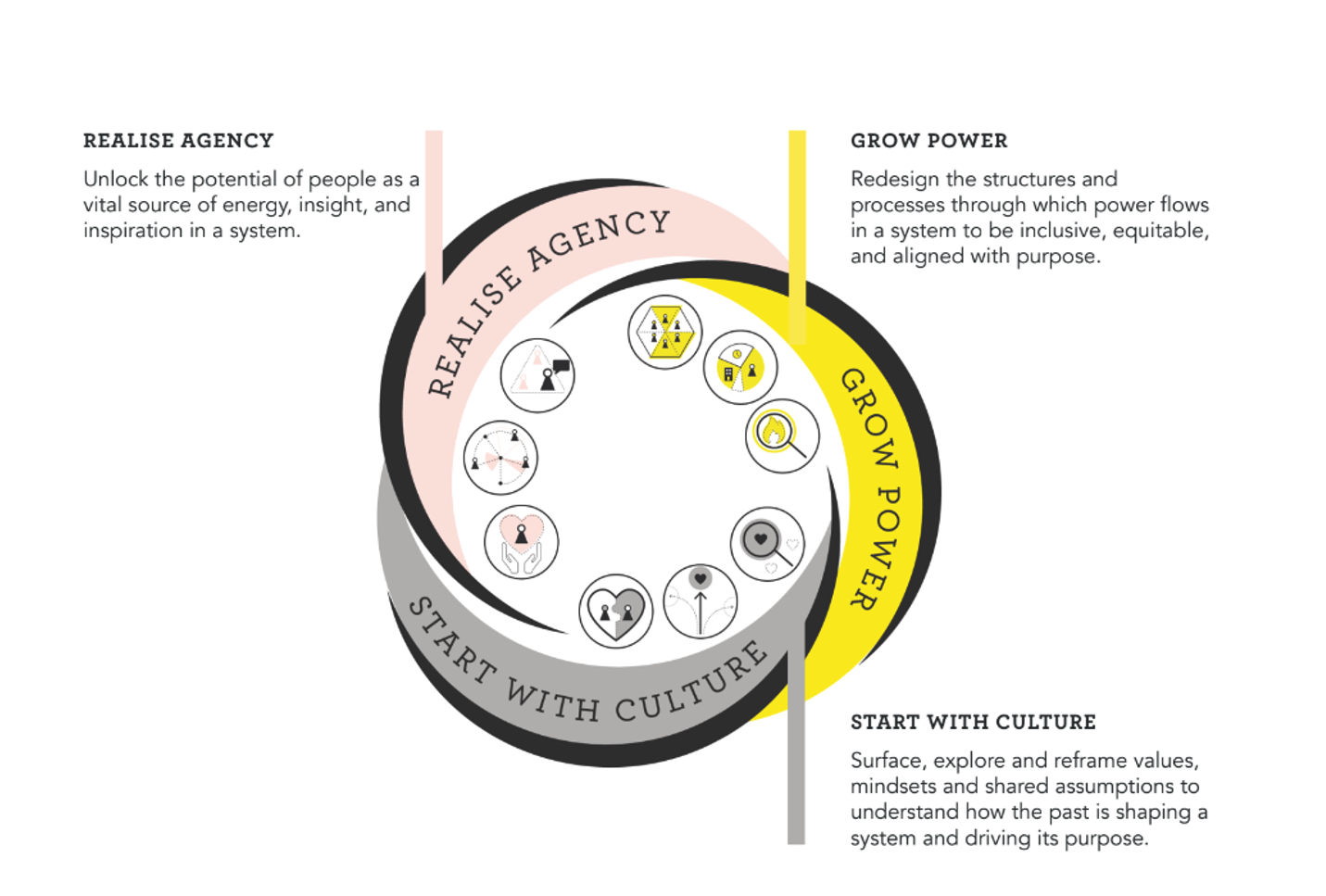
Christine Owen, Associate Director. Innovation Unit
Empowering communities for local wellbeing: designing place-based innovation
As part of their Place Based Transformation portfolio, the Innovation Unit designs and delivers community-led innovation programs that empower people to live well locally and build partnerships, collaboration, that shift the balance of power across systems and places driving long-term impact and reducing inequalities.
The Innovation Unit's programmes are driven by their mission to deliver long-term impact for people and communities, reducing inequalities and transforming the places and systems around them. Led by people and communities.
Christine gave a taste of the Innovation Unit's work and the partnerships and collaborations that they work alongside and shared some of the lessons they are learning as they co-design and develop people-centred systems and places.
Working with and redesigning systems
Delivered through partnerships and collaborations, with for example Greater Manchester and Scottish Futures Trust, they coach and work with and alongside existing places and systems to understand what enables place-based change in local areas and find solutions for the future while addressing urgent challenges they face today.
They use design led challenges, alongside their Innovation Formula to rapidly test and prototype new ways of working and generate and rapidly share learning. Then through storytelling, impact data, and broader evidence showcase the effectiveness of community-led innovation in tackling health inequalities.
Collective leadership
The strength of this work lies in the partnerships and collaborations they develop and the everyday innovations, held within the communities and systems that they work in. As an organisation they recognise the biggest challenge is shifting to a new way of working, that create sustainable change. Place based collective leadership can shift the balance of power, for example during the Caithness Challenge, where this approach enabled community place based change to flourish and for communities to take ownership of what mattered to them
Innovation Unit approach is underpinned by coaching and meaningful involvement of local people throughout the process. Diverse voices are heard that represent different parts of the system, fostering new opportunities for change and shape new modes of collective leadership.
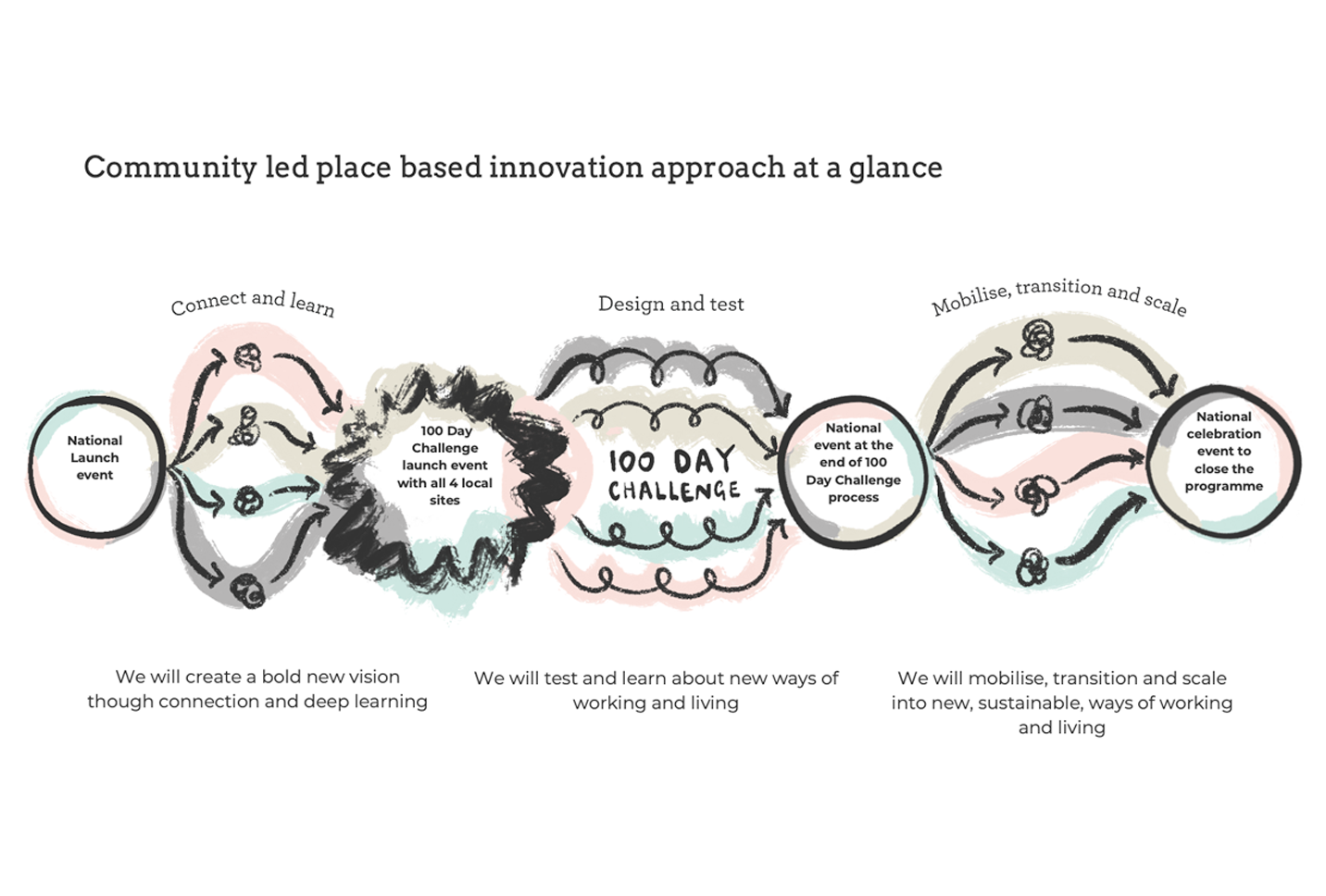
Christine shared more information about the Caithness Challenge, part of the Caithness Place Based Demonstrator. Where, through a community led innovation approach collaborative approaches to change rooted in the community fostered new ways of working together. It explored how people could use local buildings differently, seeing them as anchor assets in those communities. These buildings acted as vehicles for change, leveraging different ways to engage communities and work with the public sector.
The presentation concluded by discussing the challenges of shifting narratives to co-create a shared purpose, avoiding being anchored in urgent demands instead of taking preventative approaches, and the importance of developing collective accountability and leadership.
Finally, it highlights the focus on developing new ways to invest in communities, fostering community wealth and ownership in Scotland
Click here to learn more about the Innovation Unit
Image credit: Innovation Unit
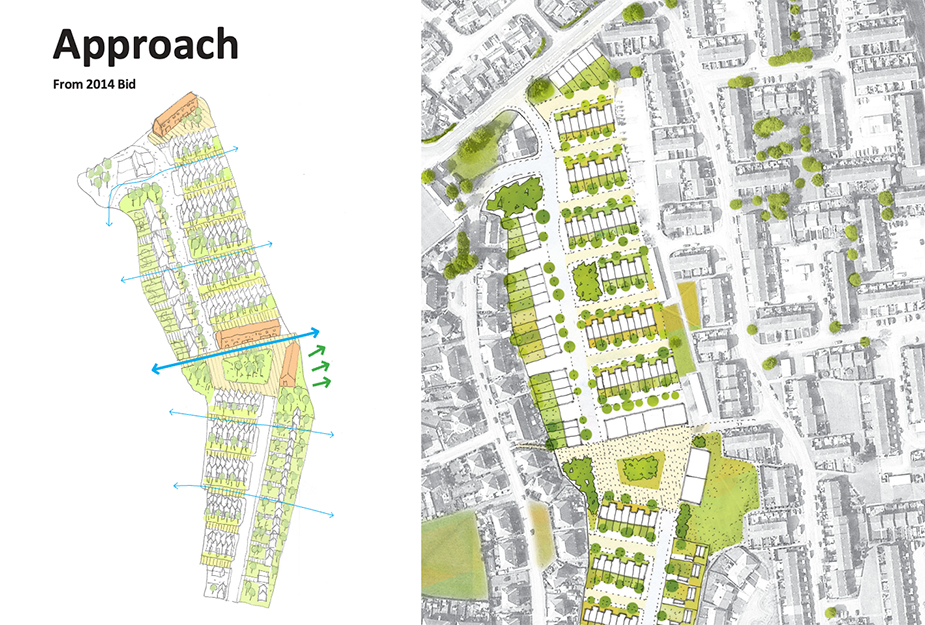
Ewan Anderson, Director, 7N Architects
Fraser Avenue, (Re) growing the place
Ewan Anderson of 7N Architects spoke about Fraser Avenue in Inverkeithing, Scotland. A decade-long regeneration project, led by Kingdom Housing Association and Fife Council, aimed to transform the area into a thriving neighbourhood.
Designing for belonging
Fraser Avenue was built in the 1950s and embodied all the hope and good intentions of that time. Over the years it faced many challenges. Most of them weren't physical. The key spatial challenges came from having very poorly defined spaces. There was a lot of amenity space, but little was used, and this created a poor sense of belonging.
Fraser Avenue faced many challenges, however beneath the surface, behind the closed doors, there was a strong sense of community and a real energy and a desire to change things around. And it's this passion and drive that drove the whole process at Fraser Avenue.
The physical design addressed the identified social need. Long, impersonal buildings were broken up, creating smaller, well-defined spaces. Each home had a private entrance, fostering a sense of ownership. Streets were redesigned to be more human-scaled, encouraging interaction.
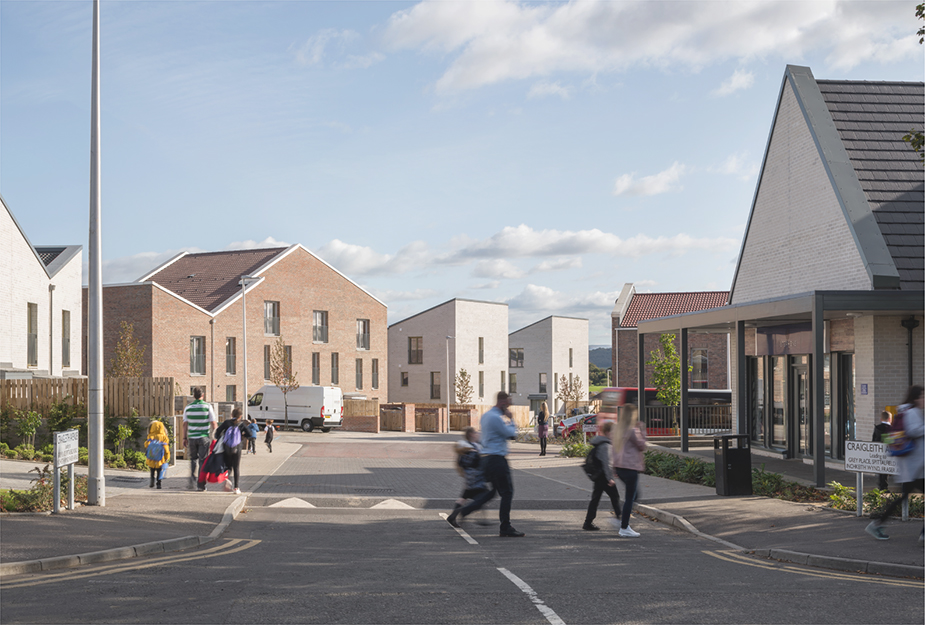
A collective effort
The project's success hinged on extensive community engagement. Unlike typical planning exercises, this wasn't about presenting a pre-determined design. Instead, residents actively participated in shaping their new neighbourhood.
The contractor played a crucial role, communicating with residents and even involving local youth in training programmes. Residents were empowered by choices, from selecting front door colours to personalising layouts.
Success measured in lives changed
The project's impact went beyond aesthetics. A post-occupancy workshop revealed a heartening transformation. Neighbours were talking again, children were playing outside, and a resident even reported feeling better and coming off medication.
Fraser Avenue demonstrates the power of preventative design. By addressing the root causes of social issues through design, the project created a place that fosters well-being and is likely to thrive for generations to come. This people-centred approach represents a sustainable investment in the community's future
Click here to learn more about 7N Architects
Image credits: plan 7N Architects / image of street scene Gordon Burniston
Main image header image 'Sustainable Place Making diagram', credited to 7NArchitects
What next for place?
Join us at the Advanced Research Centre (ARC), University of Glasgow, to explore how we can shape ways of working to nurture place meaning, strengthen place partnerships through creativity and design for lasting benefits.
This event is organised in collaboration with University of Glasgow, AHRC Place Programme, Architecture and Design Scotland and Academy of Urbanism and supported by LUC.
